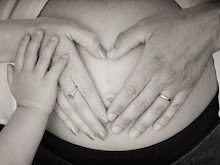I am kind of a nerd and I find facts very intriguing! I thought I would share these with you!
Author: Susan Smith
Published: 2006 November. Revised with Forward 2007 January. New York NY: Evan B. Donaldson Adoption Institute
This publication, released in November for National Adoption Awareness month, represents the most thorough, intensive and sophisticated effort to date to understand contemporary infant adoption, particularly as it relates to the least-understood and most-stigmatized participants in the process: the women and men usually termed "birthparents."
Published: 2006 November. Revised with Forward 2007 January. New York NY: Evan B. Donaldson Adoption Institute
This publication, released in November for National Adoption Awareness month, represents the most thorough, intensive and sophisticated effort to date to understand contemporary infant adoption, particularly as it relates to the least-understood and most-stigmatized participants in the process: the women and men usually termed "birthparents."
- More adoptions take place each year than is commonly perceived or reported. The Institute estimates more than 135,000 annually, of which about 13,000 to 14,000 involve babies who are voluntarily relinquished domestically. Of non-stepparent adoptions each year, approximately 59 percent are from the child welfare system, 26 percent from abroad, and 15 percent of domestic infants.
- Overall, the parents placing their children for adoption in the 21st Century are very diverse and different from their counterparts in previous generations. They are no longer primarily teenagers; in fact, only about one-fourth are teens. The predominant profile is young women in their 20s who have graduated from high school, many of whom have other children.
- The vast majority of adoption agencies, as well as independent practitioners, offer open adoptions, in which identifying information is exchanged. Many of the adoptions they arrange also are mediated adoptions, in which ongoing information is exchanged through the agency.
- An overwhelming proportion of birthmotherscontemporary have met the adoptive parents of their children - probably 90 percent or more - and almost all of the remaining birthmothers helped to choose the new parents through profiles. Contrary to the stereotypes that have been created about them, almost no women choosing adoption today seek anonymity or express a desire for no ongoing information or contact.
- Available data and experience indicate a minority of infant adoptions involve fathers in the process. The strongest protection for their rights and for the legitimacy of the adoption process requires identification of biological fathers and notifying them of adoption proceedings. Many states have established putative father registries to involve these men, but they are too often used as a means of cutting them out rather than including them.
- Principally because adoption is not well understood by the public generally, most women struggling to make decisions about unplanned pregnancies do not have accurate information with which to make an informed choice about whether this is a reasonable option for them.
- In some states, attorneys paid by and representing the prospective adoptive parents also may represent the women (and men when they are involved) considering placing their children. This practice of dual representation raises acute ethical and practical concerns.
- Research findings consistently show that women who feel pressured into placing their children suffer from poorer grief resolution and greater negative feelings. Most states do not have laws that maximize sound decision-making, however, such as required counseling, waiting periods of at least several days after childbirth before signingrelinquishments, and adequate revocation periods during which birthparents can change their minds.
- Research on birthparents in the era of confidential (closed) adoptions suggests a significant proportion struggled - and sometimes continue to struggle - with chronic, unresolved grief. The primary factor bringing peace of mind is knowledge about their children's well-being.
- Current research on birthmothers concludes that being able to choose the adoptive family and having ongoing contact and/or knowledge results in lower levels of grief and greater peace of mind with their adoption decisions.
- Women who have the highest grief levels are those who placed their children with the understanding that they would have ongoing information, but the arrangement was cut off. Such contact/information is the most important factor in facilitating birthparents' adjustment, but only 13 states have laws to enforce post-adoption contact agreements in infant adoptions.











2 comments:
I wish all of the world could read and atain this information! Great post, so very informative, thank you very much
And just for the record, my husband calls me the "Female Cliff Claven" because of all the factoids that I know ;-)
Thank you so much for this...I, too, love statistics and numbers, and this has been great for backing up my side in an argument, well more debate, really, that I have been involved in as of late.
Post a Comment